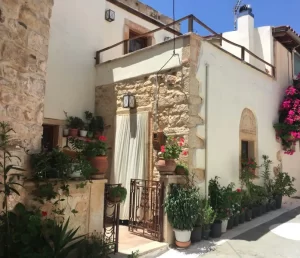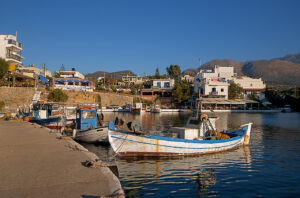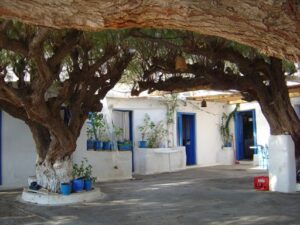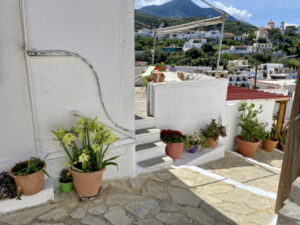Lithines Village paints the picture of a quaint hamlet adorned with ancient stone dwellings, an array of inviting taverns and kafenions, a modest-sized supermarket, and a handful of serene churches.
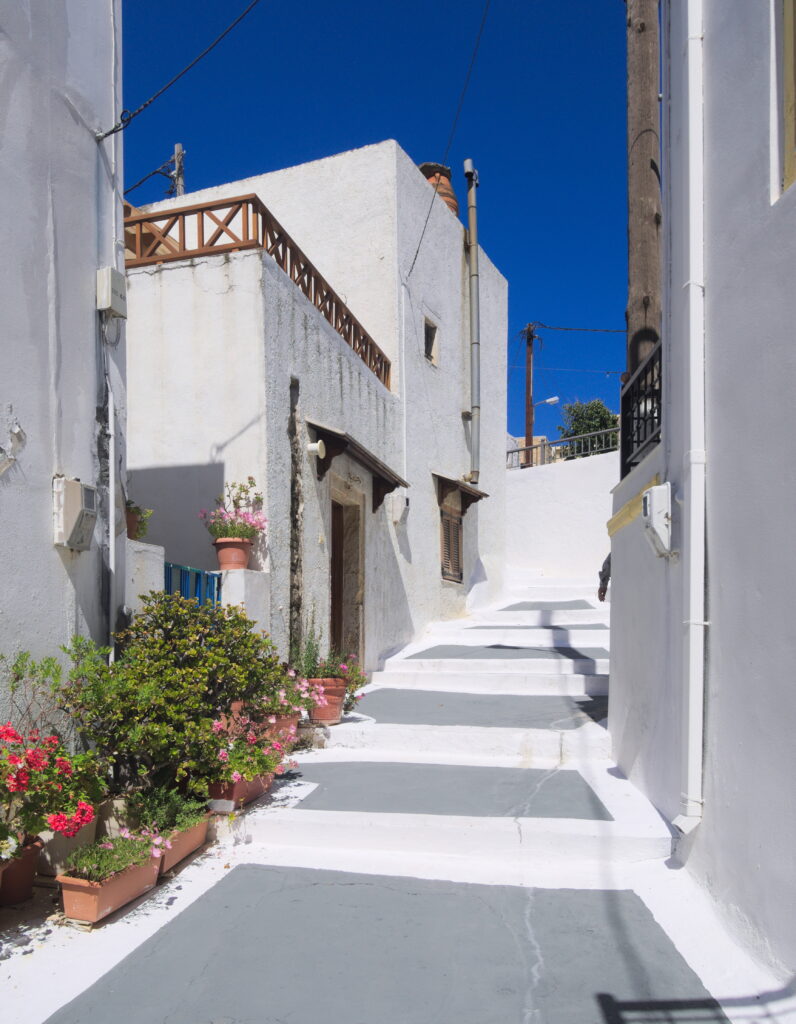
Nestled in the southeastern expanse of Crete, it lies on the passage between the northern Sitia and the southern Makrigialos, conveniently accessed via a highway junction. The village’s proximity to Sitia is a mere 25 kilometers. Situated just a 10-minute drive away from Lithines are the coastal havens of Analipsi and Makrigialos in the southern Lassithi district.
The village streets wind through narrow pathways, occasionally challenging even the most skilled drivers to maneuver tight corners. This characteristic imbues Lithines with a certain Cycladic island ambiance akin to the likes of Mykonos or Paros. The village owes its name to Lucas Litinos, a Byzantine nobleman who set foot on Crete in the year 1182.
Once a bustling small town, Lithines harbored a significant landmark—a three-story Venetian tower. In 1822, this tower became the site of a gripping historical event. A group of 140 Turkish men and 250 women sought refuge within its walls, staunchly defending themselves. Yet, the tower was targeted by Greek revolutionaries who attempted to destroy it. Though the initial explosion faltered, a subsequent fire—ignited by the wooden floors—claimed the lives of nearly all the Turks. In a peculiar twist, while trying to douse the flames, the Turks accidentally spilled a barrel of raki (a potent alcoholic beverage) onto the fire, mistaking it for water. Solely one woman survived her harrowing leap from the tower. Today, the Venetian tower’s remnants are barely discernible.
Amongst Lithines’ array of structures are its charming churches, with the preeminent one being the 15th-century Agios Anasthasios Church. Treasures within include an icon of the Virgin Mary, renowned for its purported healing abilities. Adorning the church walls are curious plates embedded by the hands of the laborers who constructed the edifice. These plates are remnants from the laborers’ own meals, as they subsisted mainly on bread and olives due to the belief that meat would swiftly decay in the church’s vicinity. Legend weaves the tale of a Turkish passerby deliberately flaunting meat in front of the Greeks—a gesture that promptly caused the meat to spoil, and the following day, led to the demise of the Turk’s livestock. Dominating a village square, the grandest of the churches, the Agia Triada, stands as a composite of two houses and an accompanying bell tower.

